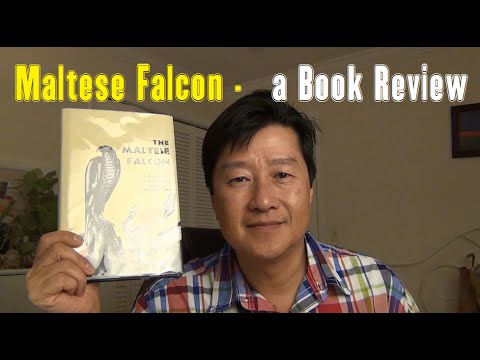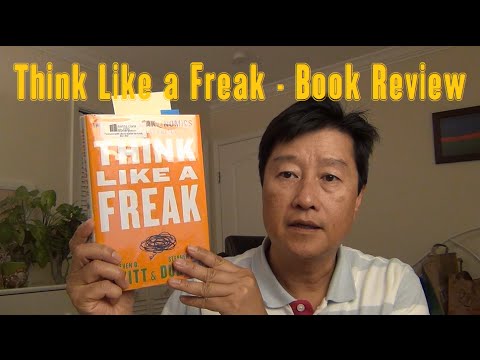As an engineer working on computer development for the last 30 years, I found this book very enlightening and thorough but a bit long. It documented the history of the computer from as early as Ada Lovelace’s concept document over a hundred and fifty years ago to the present PC era. It’s a much longer history than I thought and the book was equally long but the stories of the individuals who contributed to the computer history were interesting nevertheless.
My main takeaways:
– People who worked as a team and collaborate well tend to bring out the best and most creative work. Internet is the epitome of the collaborate work on the network.
– People like Ada Lovelace, Einstein, Steve Jobs, and others are good at bring out the symbiosis of science of humanity.
– Significance of Altair Computer in 1975 that gives birth of Microsoft and Bill Gates’ wealth.
– We all stand on the shoulders of giants of the past so we can look farther. Notable contributors: Alan Turing, who came up with the idea of a Logical Computing Machine, dubbed a Turing Machine. Claude Shannon came up with the “logic gate” idea. George Stibitz turned the idea into a mechanical relay machine (400 relays) in 1939.
– The book started with the story of Ada Lovelace and ended with it. Ada was the first one conceive in her “Notes” in 1843 the idea of the general-purpose computer, where the program is stored in a memory device and executed there.
Summary:
Chapter 1: Ada, Countess of Lovelace
– This chapter goes into the beginning of the computer concept given by the early pioneer, Ada Lovelace. She had come up with the concept of computer back in early 1842 in her paper called “Notes” that outlined the four key concepts: general-purpose (not limited to just doing differential equations, etc.), not limited to just math and numbers, a step-by-step sequence or algorithm (e.g. calculating Bernoulli number), and not thinking on its own (dubbed Lady Lovelace’s Objection.)
Chapter 2: The Computer
– Solving the differential equation by Babbage was the first application for the special purpose computer – or appliance in today’s term.
– ENIAC was the first electronic calculator built by Mauchly and Eckert with 17,468 vacuum tubs and weighed 30 tons in 1945.
– British in 1943 with Turing’s help built a special purpose decryption machine to decrypt the German wartime codes, based on mechanical relay and vaccum tubes. It’s called Colossus.
– There is a long discussion about who invented the computer? Mauchly and Eckert topped the list but it’s mostly a group effort and ideas drawn from the past.
Chapter 3: Programming
– Grace Hopper was the first programmer due to her ability to articulate precisely. The Mark I machine she used was a behemoth, made by IBM. She eventually joined Eckert-Mauchly Computer Corp. to help develop the COBOL and Fortran languages and first compiler.
– Alan Turing contributed to computer algorithm and how should a “Turing machine” work. His homosexuality caused him great pain and resulted in his being jailed and sentenced to chemical castration in UK. He later committed suicide at the early age of 41.
Chapter 4: The Transistor
– This chapter describes the invention of the 20th-century’s most important technology – transistors by John Bardeen (the quiet, theorist physicist), Walter Brattain (the experimenter), and William Shockley (the competitive, credit-grabbing boss) in the Bell Lab in 1947. The competitive nature of William Shockley showed in his behind-the-scene bipolar-transistor idea and publication/patent to try to overshadow Bardeen and Brattain’s FET transistor idea. In 1952, Pat Haggerty of Texas Instruments, originally a Dallas-based oil exploration company, persuaded Bell Labs to license its transistor technology and managed to mass produced the transistors resulting in cheap pocket radios (Regency TR-1). IBM’s Thomas Watson turned the transistors into computers. Then Shockley decided to start his own company and ended up putting in Palo Alto, his childhood home to be close to his aging mother. Hence, the Silicon Valley was born. Robert Noyce and Gordon Moore and the other 6 rebelled against Shockley to form the Fairchild Semiconductor.
Chapter 5: The Microchip
Jack Kilby of Texas Instrument and Bob Noyce and Gordon Moore of Fairchild held a patent dispute on who invented the microchip, while the popularity of microchip blasted off. Moore’s “Law” was born. Noyce got tired of the Fairchild bureaucracy and decided to start their own company with Gordon Moore and Andy Grove. With Arthur Rock’s venture capital funding, they started Intel. Thanks to the foresight of owning the right to the 4004 design, while designing a general-purpose calculator for Busicom of Japan, they embarked on the road of Intel’s microprocessor architecture and products.
Chapter 6: Video Games
Spacewar was the first open-source computer game created by Steve “Slug” Russell on a DEC PDP-11 computer. Then Nolan Bushnell started Atari after a bad experience with Nutting Associates and came up with “Pong” game. This chapter proves that innovation takes three: a great idea, the engineering talent to execute it, and the business savvy to turn it into a successful product.
Chapter 7: The Internet
Bob Taylor, the clever and stubborn Texan ARPA Director, managed to get Larry Roberts to come work on the ARPA net, originally intended to link all the ARPA-funded computers to share the compute resource. To design the router, they came up with the novel idea of packet switching, owing to the Paul Baran’s original idea to be more robust against nuclear attack: to be distributed with no central hub. AT&T, so adamant about their “circuit switch” network, never saw the beauty of the distributed packet routing network. The Internet came to existence around 1969 but it awaits something else besides big research computers on campus to be popular — PC’s.
Chapter 8. The Personal Computer
Doug Engelbart demonstrated in 1968 the first mouse at the computer conference. Alan Kay of Xerox PARC, invented the first Dynabook, a notebook computer. Xerox PARC engineers came up with the first GUI Alto Systems with a mouse. Ed Roberts, a hobbyist, came up with the Altair 8800 with Intel’s 8080 chip. The Altair attracted Bill Gates and Paul Allen to come up with the BASIC language for that machine.
Chapter 9: Software
Bill Gates and Paul Allen’s Microsoft story is described in this chapter. Gates exhibited the innovator’s traits: a fanatic who loves what they do, works day and night, and a rebel with little respect for authority. He argued against hobbyist club taking the BASIC code without paying for it. Also, Apple’s story with Steve Jobs and Wozniak is being told. In addition, Dan Bricklin’s visicCalc occupies a couple of pages. Of course, the main turning point for Microsoft was Gates’ insistence on giving non-exclusive license right to IBM and Microsoft owning the code. Gates’ mother, Mary Gates, actually played a critical role for IBM to work with a non-name Microsoft at that time because IBM’s CEO, Opel, knew Mary Gate, working with United Way. The battle between Gates and Steve Jobs on GUI interface was described further. Also, Linus Torvald’s Linux story and the Gnu guy, Stallman’s leading the free software movement made an impact on the computer industry.
Chapter 10: On Line
Steve Case’s American Online and Al Gore’s contribution to Internet.
No Al Gore didn’t invent the Internet and never claimed he did but he did open up the ARPANet to the general public, who are prohibited to tap into the network until 1992.
Chapter 11: The Web
Tim Berners-Lee invented the hypertext across the Internet, hence the URL and http protocol were invented. Then he created HTML to display the web pages. He and Robert Cailliau coined their proposal the “World Wide Web.” They joined Richard Stallman in adopting the Gnu General Public License. Then entered Marc Andreessen and his graphical Mosaic browser in 1993. Justin Hall started blogging in 1993 as a Freshman at Swarthmore College. There is a story of Wikipedia by Ward Cunningham and Jimmy Wales. Lastly, it was the Google story started by Larry Page and Sergey Brin. This is a huge chapter.
Chapter 12: Ada Forever
The book ended reciting the Ada Lovelace’s objection that no computers no matter how powerful, would ever truly be a “thinking” machine. It’s the “human-computer symbiosis” that will do us most good. Lessons learned from the author’s perspective: 1) creativity is a collaborative process, 2) most technologies are based on ideas handed down from previous generations, 3) most productive teams were those that brought together people with a wide array of specialties (like Bell Labs), 4) physical proximity is beneficial. 5) best leadership come from teams that combined people with complementary styles (as in founding fathers of USA). 6) pairing visionaries (Noyce and Moore) with operating managers (Grove). 7) in a collaborative team, decisions can be made through the “request for comment” process. 8) successful innovators/entrepreneurs are “product” people.
The last paragraph: Innovation will come from … creators who can flourish where the arts intersect with the sciences and who have a rebellious sense of wonder that opens them to the beauty of both.






